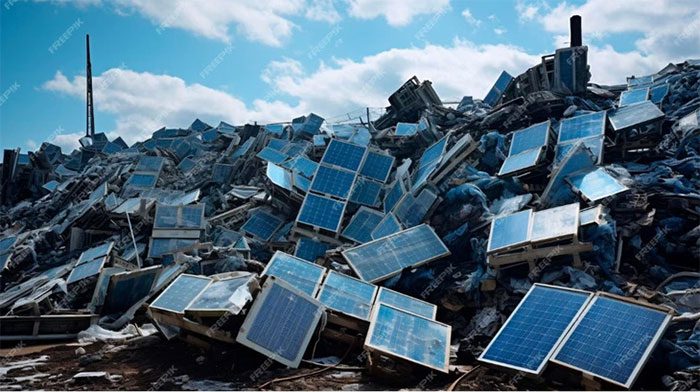What happens to expired solar panels and the toxic components like lead and cadmium found in them?
In addition to components that pose a danger to humans, such as lead and cadmium, solar panels also utilize various materials like glass, aluminum, and silicon. These materials can pose an environmental threat if not disposed of properly and end up in landfills, according to Oil Price.

Solar panel waste, a significant global concern – (Photo: ENERGY CENTRAL).
To address this issue, many countries and regions have implemented laws and standards concerning the proper disposal of solar panels.
For example, the European Union’s Waste Electrical and Electronic Equipment Directive (WEEE) provides precise guidelines for the collection, treatment, recycling, and recovery of solar panels.
Meanwhile, the United States Resource Conservation and Recovery Act (RCRA) regulates the handling and disposal of various hazardous wastes, including certain types of solar panels.
However, despite these laws and regulations, data indicates that less than 10% of decommissioned solar panels in the U.S. are recycled.
Similarly, the recycling rate for solar panels in the European Union is also around 10%, even though EU legislation mandates that solar panel manufacturers must recover at least 80% of the weight of each panel.
Worse yet, efforts to recycle solar panels remain in the early stages and may not progress quickly enough to mitigate the damage already caused.
According to estimates from the International Renewable Energy Agency (IRENA), the world could contain 78 million tons of waste solely from solar panels by 2050.
Regardless, it is crucial to ensure that solar panels are recycled or stored appropriately to prevent them from being sent to landfills and causing long-term environmental harm.


















































